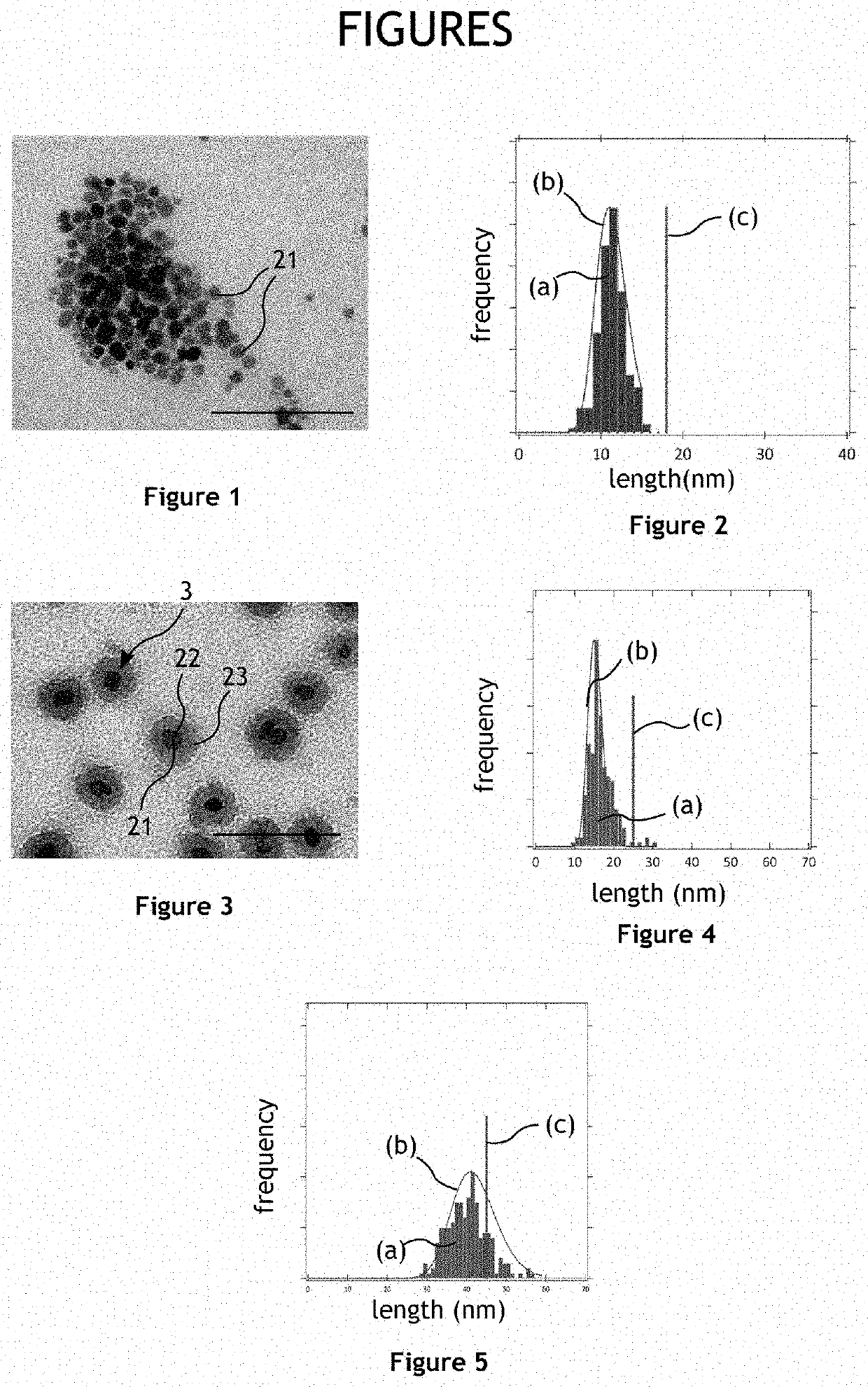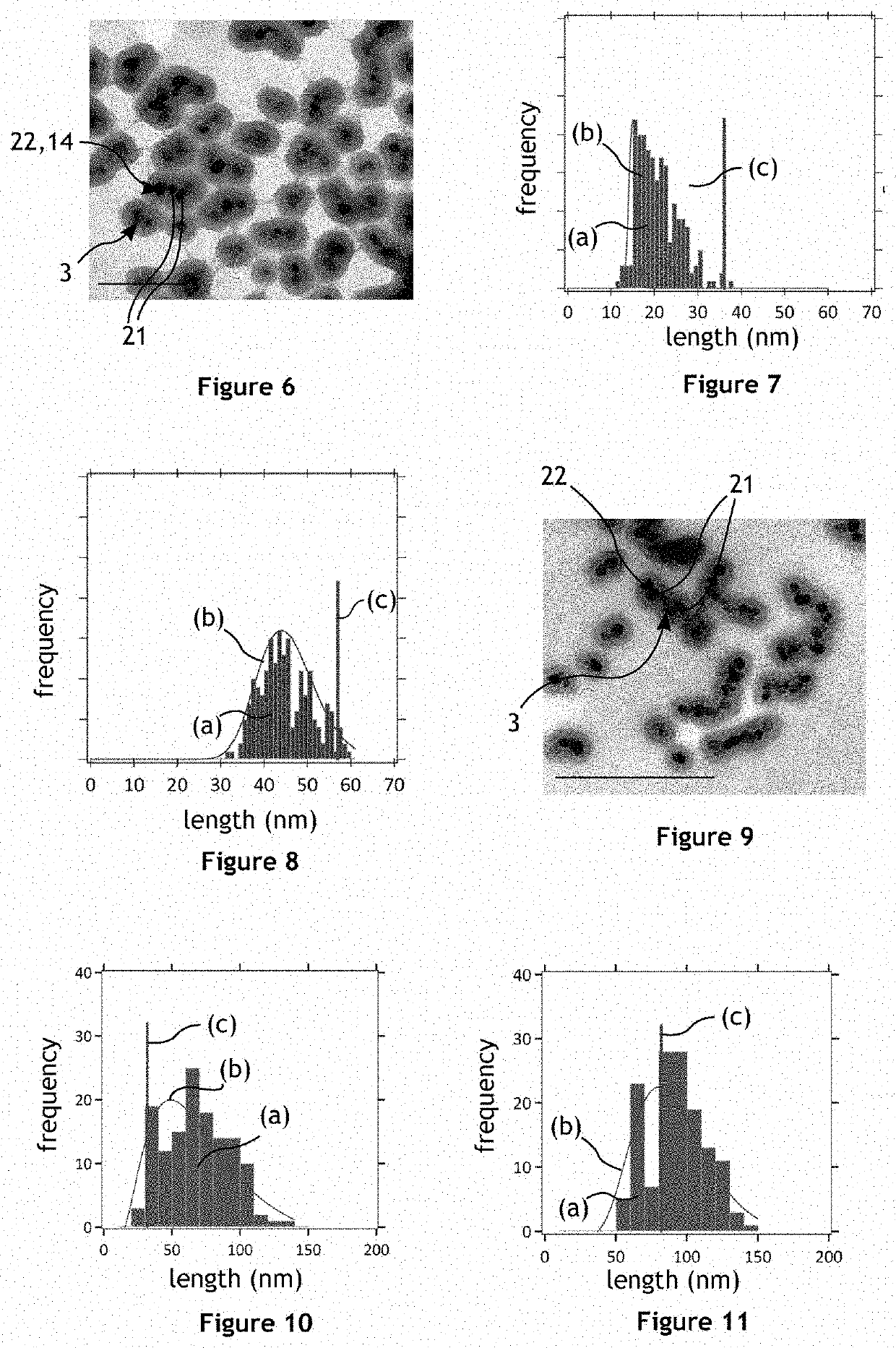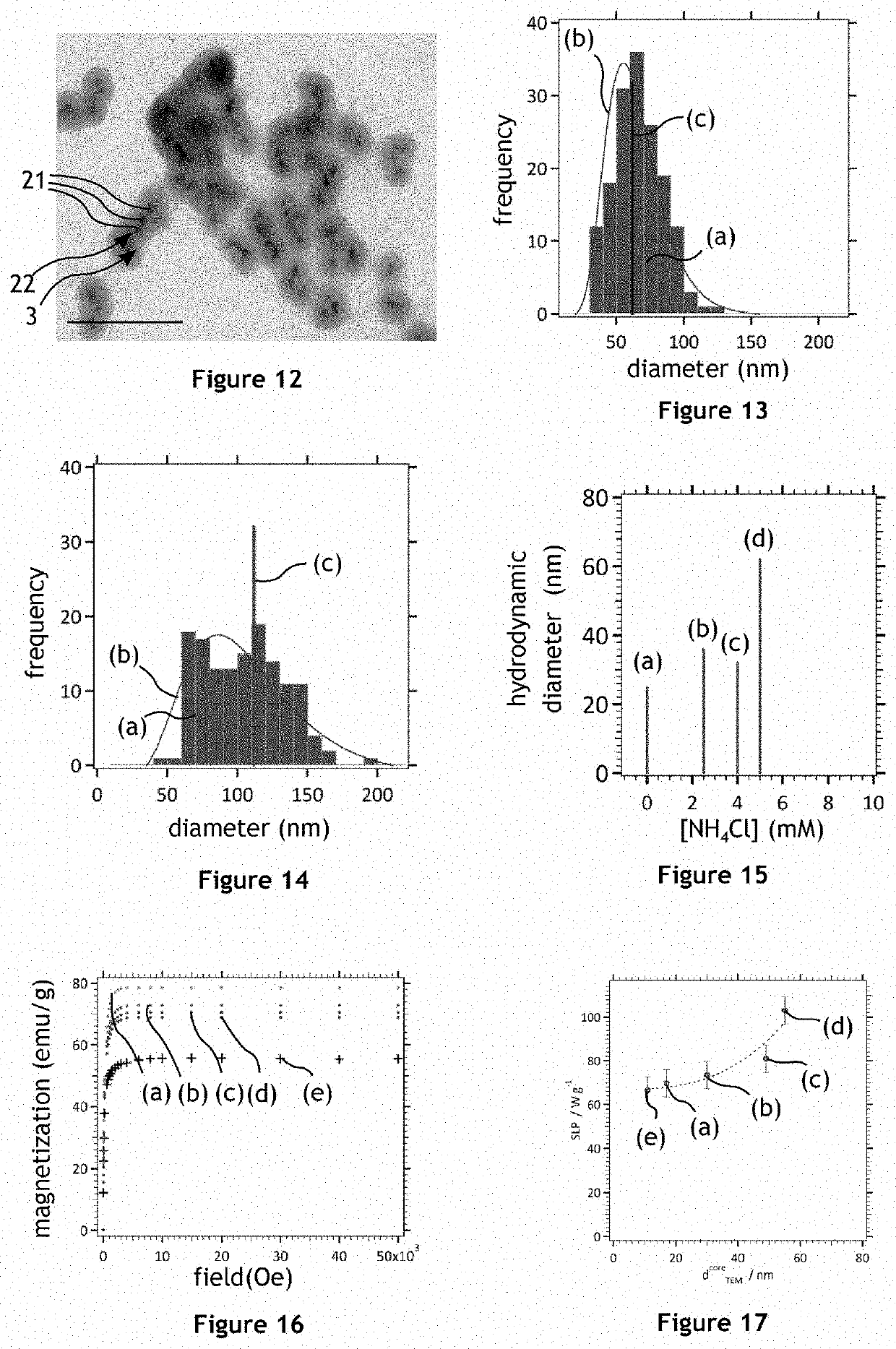Process for Detecting Nucleic Acid Molecules by Magnetic Hyperthermia and Assembly Enabling Such Detection
a nucleic acid and magnetic hyperthermia technology, applied in the direction of microbiological testing/measurement, biochemistry apparatus and processes, etc., can solve the problems of limiting the precision of the diagnosis issued, requiring time for the use of pcr, and quantification errors
- Summary
- Abstract
- Description
- Claims
- Application Information
AI Technical Summary
Benefits of technology
Problems solved by technology
Method used
Image
Examples
Embodiment Construction
[0084]In reference to FIG. 1, magnetic nanoparticles of maghemite γ-Fe2O3 can be synthesized by the so-called Massart process, from colloidal magnetite. The synthesis to produce nanoparticles illustrated in FIG. 1 comprises a step of inorganic polycondensation, wherein two precursors are formed, Fe2(OH)4 and Fe3(OH)6. When the precursor concentration reaches a limit value, magnetite seeds are formed (nucleation) and grow. Seed formation is controlled by the precursor concentration, blocking nucleation when it reaches a lower limit value and leads to the maturation and aging of the seeds. This process is described in detail by LaMer, V. K., & Dinegar, R. H. in Theory, production and mechanism of formation of monodispersed hydrosols, 1950, Journal of the American Chemical Society, 72(11), 4847-4854.
[0085]The size and shape of the nanoparticles synthesized can be controlled, for lengths less than around 15 nm, by the ratio between the quantity of Fe(II) and Fe(III) and by the temperatu...
PUM
| Property | Measurement | Unit |
|---|---|---|
| Fraction | aaaaa | aaaaa |
| Time | aaaaa | aaaaa |
| Width | aaaaa | aaaaa |
Abstract
Description
Claims
Application Information
 Login to View More
Login to View More - R&D
- Intellectual Property
- Life Sciences
- Materials
- Tech Scout
- Unparalleled Data Quality
- Higher Quality Content
- 60% Fewer Hallucinations
Browse by: Latest US Patents, China's latest patents, Technical Efficacy Thesaurus, Application Domain, Technology Topic, Popular Technical Reports.
© 2025 PatSnap. All rights reserved.Legal|Privacy policy|Modern Slavery Act Transparency Statement|Sitemap|About US| Contact US: help@patsnap.com



